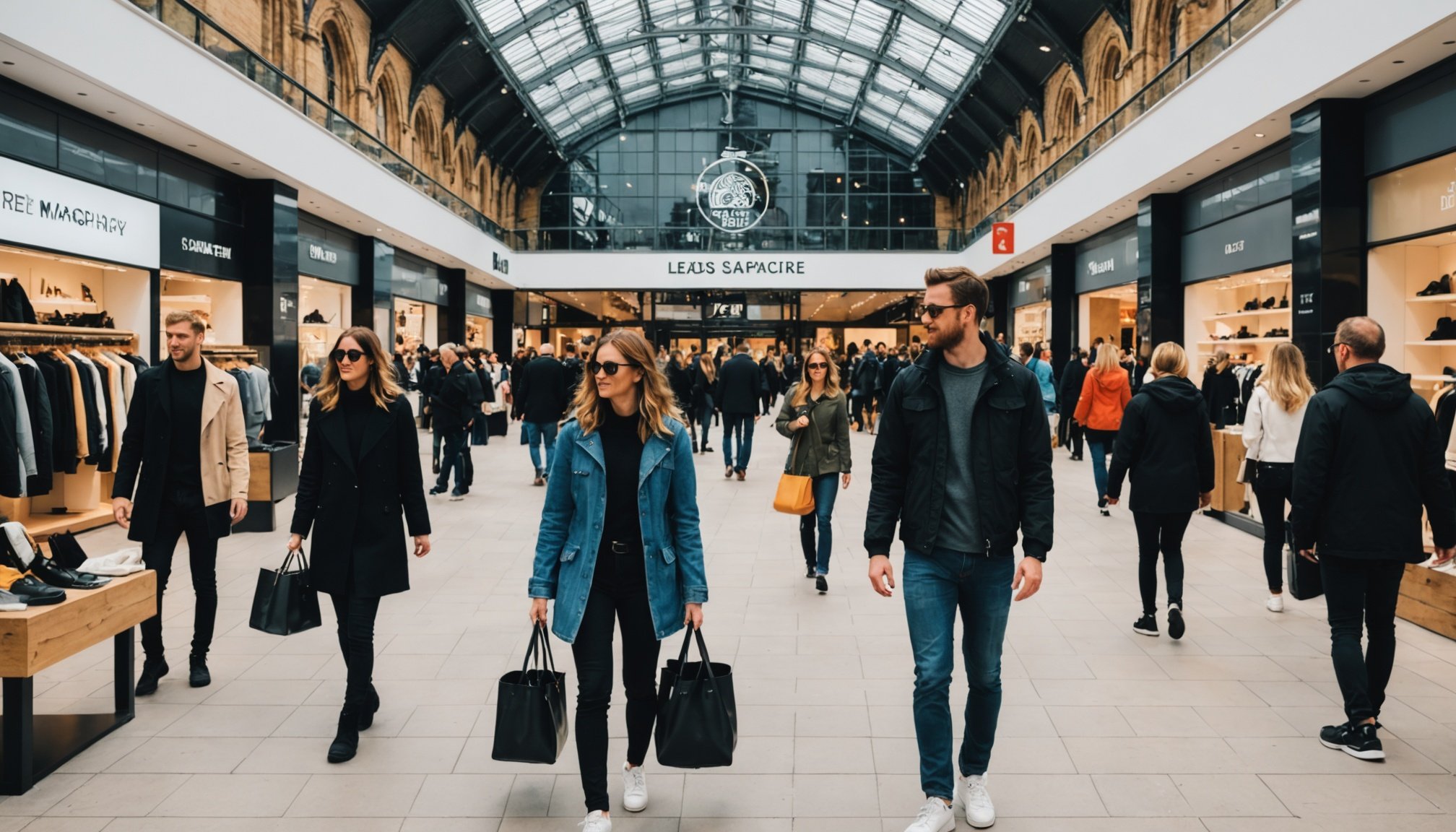Overview of Augmented Reality in Retail
Augmented Reality (AR) in retail is transforming how consumers interact with products and stores by overlaying digital content onto the real world. This retail technology enhances the shopping experience by allowing users to visualise products in their environment or on their bodies before purchasing. AR’s significance in the retail sector is underscored by its ability to bridge the physical and digital shopping worlds, providing a more interactive and engaging process for buyers.
The history of AR technology in retail began with simple applications like virtual fitting rooms and has evolved significantly. Initially, AR faced challenges due to limited device capabilities and high costs. However, advancements in smartphone technology and software development have made AR more accessible and affordable for consumers and retailers alike.
This might interest you : Revolutionizing Cardiff’s Food Experience: Innovative Mobile Payment Options for an Exceptional Dining Journey
Today, AR retail technology trends include the integration of virtual try-ons, 3D product visualisations, and interactive store displays. Major brands utilise AR to personalise marketing strategies, enhance product visibility, and increase sales conversion rates. As consumers increasingly seek enhanced and convenient shopping experiences, the implementation of augmented reality continues to grow rapidly, marking a pivotal shift in retail innovation.
Impact of AR Try-On Technology in Leeds
Leeds, a dynamic city known for its vibrant shopping scene, has eagerly embraced AR try-on technology to enhance local retail experiences. This innovative approach allows customers in Leeds to seamlessly integrate digital try-ons into their shopping adventures. Local retailers are leveraging AR technology to boost sales and engage their customers in novel ways.
In parallel : Strategies to Enhance Customer Relationship Management in Sheffield’s E-Commerce Sector
Several retailers in Leeds have adopted AR try-ons to entice shoppers. For instance, a prominent clothing store in the city centre has reported a significant uptick in foot traffic and customer engagement since implementing AR features. Customers enjoy the personalised fitting experience provided by augmented reality, facilitating better decision-making and increasing purchase intent.
Statistics indicate that AR applications in Leeds shops have led to a substantial improvement in customer interaction and satisfaction. Shoppers appreciate the convenience of trying before buying, reducing the hassle of returns. The tactile-less experience has redefined retail dynamics, encouraging other businesses in the area to explore digital innovations to remain competitive. As such, AR try-ons in Leeds represent a harmonious blend of technology and retail, showcasing the way forward for future shopping experiences.
Benefits of Using AR Try-Ons for Shoppers
Augmented Reality (AR) try-ons provide numerous shopping benefits by enhancing the user experience and fostering retail innovation. A chief advantage of AR try-ons is the convenience they bring. Shoppers can visualise how products look on them or in their homes without physically visiting a store. This convenient approach saves time and effort.
Personalisation is another significant benefit. AR technology tailors the shopping journey to individual preferences, offering personalised suggestions based on past interactions. This leads to a more engaged shopping experience, making customers feel valued and understood.
Furthermore, AR try-ons improve decision-making by presenting a realistic view of products. This aspect is crucial in reducing purchase hesitancy, allowing consumers to make informed choices with confidence. Comparing traditional shopping to AR-enhanced experiences, the latter stands out due to its interactive and immersive nature, reshaping how customers perceive and engage with products. In contrast, traditional methods may lack the immediacy and detail of AR, often resulting in higher return rates and lower customer satisfaction. Overall, AR try-ons revolutionise the shopping process, merging technology with retail to benefit both consumers and retailers.
How to Use AR Try-Ons in Leeds Shops
Using AR technology in Leeds shops offers a revolutionary way to shop. This guide provides a clear path for engaging with virtual try-ons, ensuring an optimal shopping experience in Leeds.
Getting Started with AR Try-Ons
To access AR try-ons, ensure your device supports necessary apps. Most smartphones and tablets with contemporary operating systems, such as iOS and Android, are compatible. Install retail-specific apps that provide AR features. Many stores offer app links or details on their websites to facilitate this process.
Navigation of Participating Stores
Finding Leeds stores that feature AR services enhances shopping. Look for signs indicating AR integration or visit store websites for details. Upon entry, staff often guide users through the setup. Simply point your device at activated products to experience the AR magic.
Real-life Usage Examples
Within several Leeds locations, AR enables innovative try-ons. For instance, a city centre shoe store lets users compare styles and sizes virtually. This interactive preview aids decision-making and adds fun to the shopping journey. Expect intuitive interfaces and responsive interactions that mimic real-world scenarios, enriching your shopping experience.
Limitations and Challenges of AR Try-Ons
Augmented Reality (AR) try-ons in retail bring incredible advancements, but they also face limitations and challenges. A key issue is the technology barriers some consumers encounter. Not everyone has access to devices with capabilities necessary for optimal AR performance, which limits the technology’s reach. Users with outdated phones or tablets might find these tools ineffective or incompatible.
In using AR, shoppers often face user challenges, primarily due to software bugs or glitches in applications. These technical issues can disrupt the shopping experience, causing frustration and potentially deterring customers from engaging with AR tools in the future. Additionally, there is a learning curve involved, as consumers need time to grow accustomed to AR interfaces and controls.
The future outlook for overcoming these challenges is promising. Continuous advancements in smartphone and application development are set to improve accessibility and ease of use. Additionally, retailers are investing in enhanced staff training to better assist customers in navigating AR experiences, aiming for smoother and more user-friendly interactions. This proactive approach endeavors to harness AR’s full potential in retail, improving both customer satisfaction and technological integration.
Resources and Links to AR Apps and Platforms
To fully capitalise on the benefits of Augmented Reality (AR) in your shopping journeys, having a list of readily available AR applications and platforms is essential. These technology platforms are designed to enhance your interaction with retail technology and improve the overall shopping experience.
Currently, several popular AR apps serve the retail sector efficiently:
-
IKEA Place: Revolutionises furniture shopping by allowing users to visualise pieces in their actual space.
-
Sephora Virtual Artist: Enables personalised makeup try-ons without physically applying products.
-
Amazon AR View: Offers a comprehensive catalogue for virtual placements of various items in your home.
These apps are readily available for download on most smartphones and tablets, bridging the gap between digital and physical shopping worlds.
To further elevate your retail experience, ensure your device meets the compatibility requirements, such as the latest iOS or Android versions. Regular updates to these platforms bring new features and improved usability, ensuring an optimised and immersive shopping journey.


